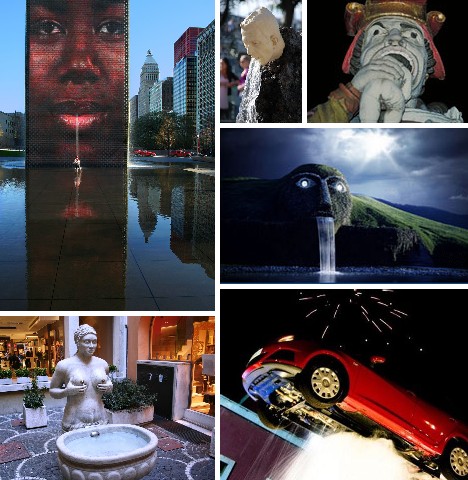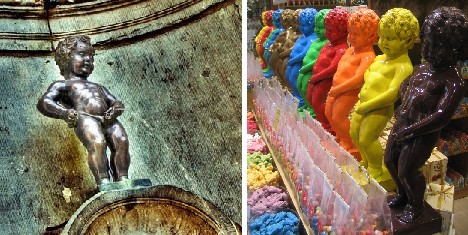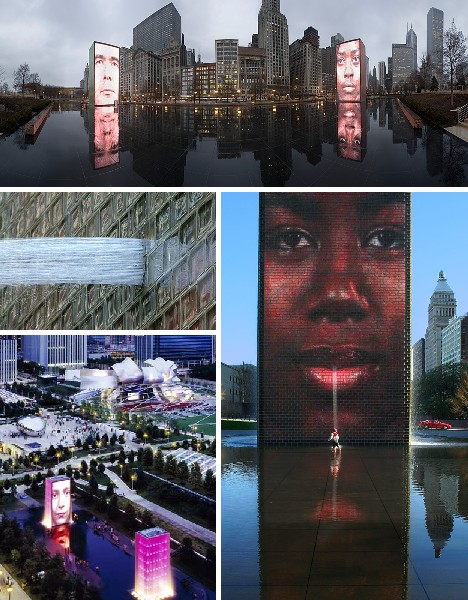Water fountains are a unique art form combining sculpture, engineering, and more than a little imagination. While the world’s most famous fountains are a delight to the senses, others range from weird to wild to downright bizarre… like the ten described here. Now, let us spray.
Bodily Functions Fountain, London
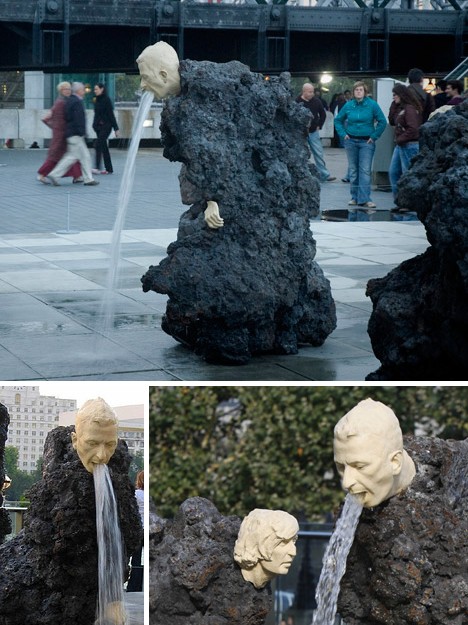 (images via: Henan Museum and Kattaka)
(images via: Henan Museum and Kattaka)
Klaus Weber’s unusual (to say the least) fountain installation titled “The Big Giving” is at least eco-friendly: the water is continually recycled and the cocoon-like encrustations that envelope the statuesque sculptures are made from waste stone and industrial waste. This most unusual fountain was set up at the Southbank Centre in London, UK, and the images depicted here date from the autumn of 2007.
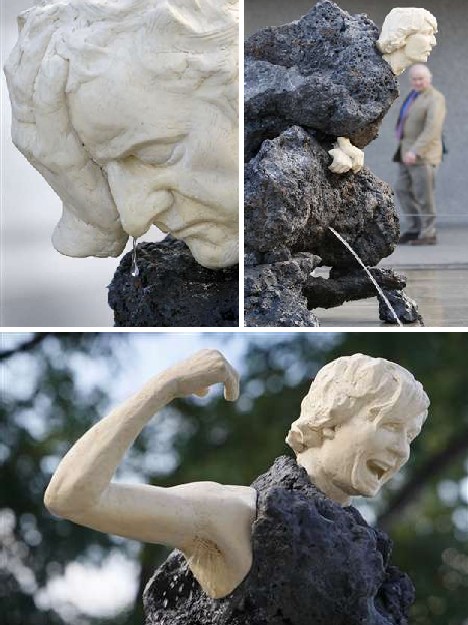 (image via: Trendhunter)
(image via: Trendhunter)
Though the vomiting individual is usually featured in reports on Weber’s creation, it actually includes a group of different figures displaying a variety of human bodily functions including sweating copiously from the armpits, urinating, and one poor fellow who suffers from the world’s worst post-nasal drip. The statues were modeled on Weber himself and a few selected friends.
Samson & The Lion, Prague
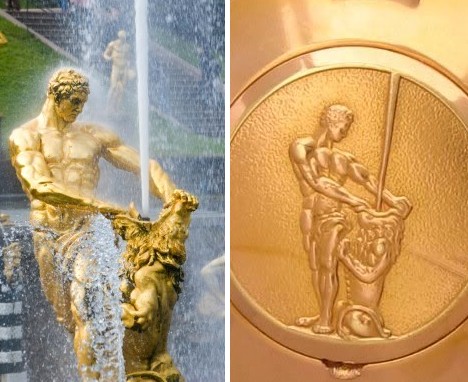 (images via: Tickets of Russia and eBay)
(images via: Tickets of Russia and eBay)
Rastrelli’s iconic scene of Samson wresting open the jaws of a lion has been a popular subject of both statuary and fountains for many centuries. One of most famous examples is in St. Petersburg, Russia, as part of The Great Cascade.
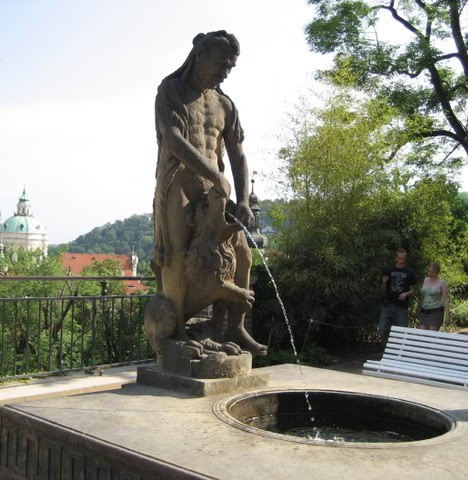 (image via: Jez & TZ)
(image via: Jez & TZ)
Another classic Samson & the Lion fountain can be found near Prague Castle in the Czech Republic’s capitol city, but something’s not quite right… could be the angle of the spray, might be a water pressure issue, or maybe it’s just me.
Jeanneke Pis, Brussels
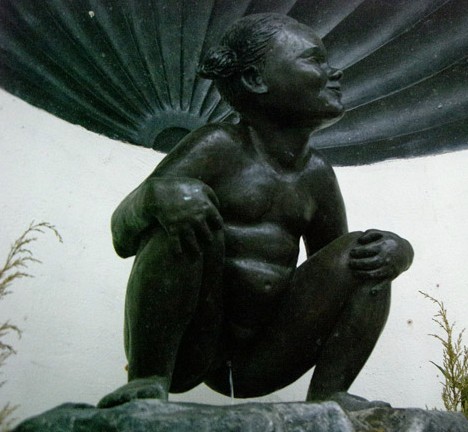 (images via: Budget Places, Trekearth, Wikimapia and Elmada)
(images via: Budget Places, Trekearth, Wikimapia and Elmada)
One of the most famous “odd” fountains in the world is the Manneken Pis in Brussels, Belgium. Designed by Jerome Duquesnoy and erected (sorry) in approximately 1619, it replaced a similar peeing-boy fountain that dated back to 1388. You’d think the weight of over 600 years of history would be enough to discourage busybodies from messing with tradition but noooo… in 1987 and undoubtedly in the spirit of gender equality, Manneken was given a female counterpart: Jeanneke Pis. The blue limestone sculpture of a peacefully urinating little girl by Denis-Adrien Debouvrie stands – squats, actually – on the east side of Fidelity Alley running north off Rue des Bouchers / Beenhouwersstraat.
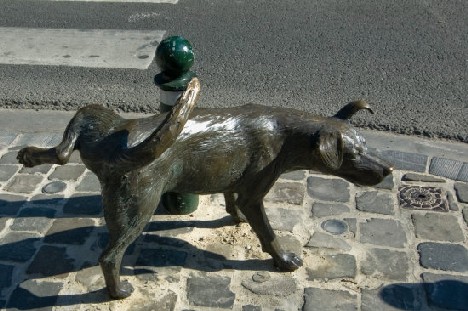 (image via: Fotothing)
(image via: Fotothing)
Rock the boat and you’ll have no end of trouble… as you might have guessed, once feminists were mollified with their own peeing statue, animal rights activists were next in line. The result? Zinneke Pis, the bronzed peeing stray dog, installed in 1998 in the same general area of downtown Brussels as Manneken Pis and Jeanneke Pis. Unlike its perennially propagating predecessors, however, Zinneke Pis has no plumbing and therefore pis-es not.
The Milkmaid of Bologna, Italy
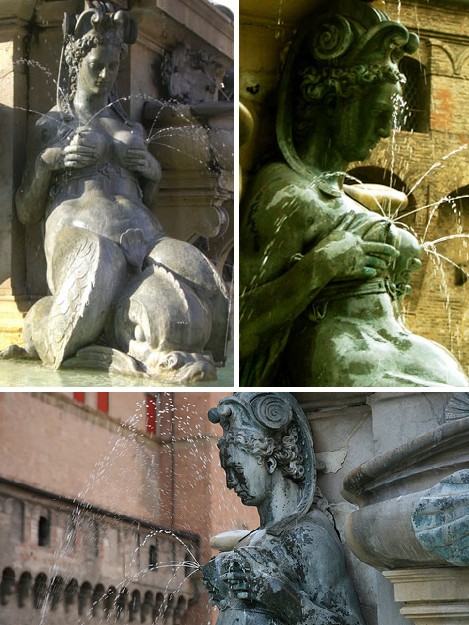 (images via: Bored Panda and Casalingarevival)
(images via: Bored Panda and Casalingarevival)
Staying in the classical vein a might longer, we have the milking mermaid of Bologna… that’s Bologna, Italy; the fountain’s not made of bologna though that would be only slightly more bizarre.
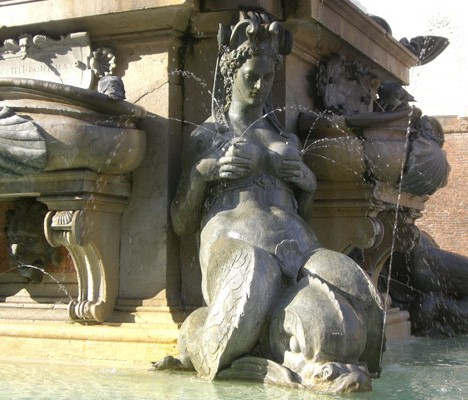 (image via: Fecalface)
(image via: Fecalface)
We’re not quite sure what the original artist had in mind here, but suffice to say that in those far-off days, long before Playboy or the Internet, gazing at fountains was pretty much the only game in town for young lads seeking to view erotic content.
Fontana Delle Tette, Italy
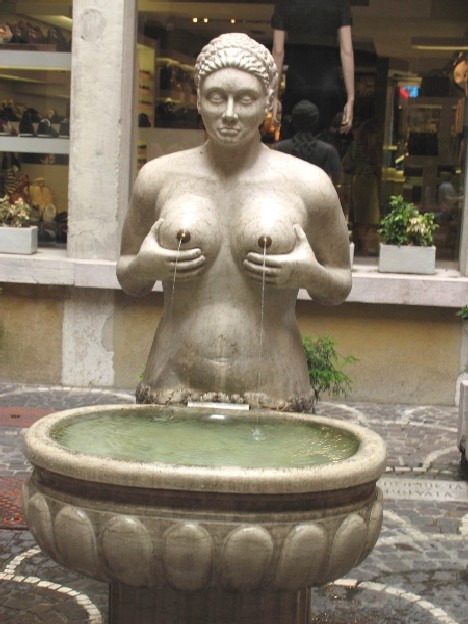 (image via: Suite101)
(image via: Suite101)
Lest you think Bologna’s boob fountain is a lone aberration, and also because where you find one breast you’re likely to find another, we present the Fontana delle Tette. Located in the old town center of the northeastern Italian city of Treviso, the Fontana delle Tette, or… hey, do we really need to translate?… dates from 1559AD – or by the looks of it, 36C.
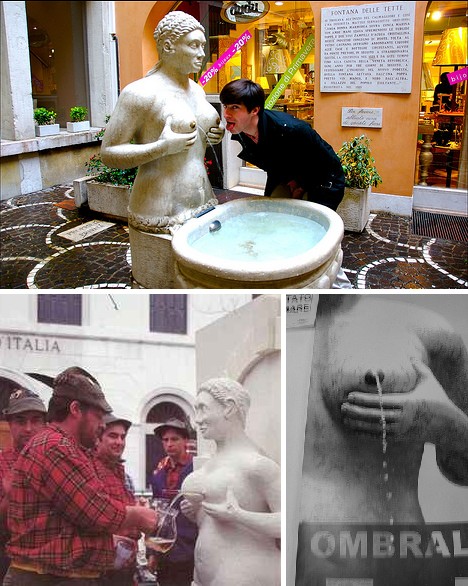 (images via: Amb688, Ostaria de la Ombre and Anikita)
(images via: Amb688, Ostaria de la Ombre and Anikita)
Every day is special in Treviso, or so the citizens of centuries past must have wished. The story goes that on designated holidays, victory celebrations, the election of a new mayor, or just for the heck of it, the water which usually spurted out from the statue’s breasts would be replaced by wine: red on the left, white on the right (or vice versa, it didn’t matter much). The fountain would dispense wine for 3 consecutive days and the citizens lapped it up… until boring old Napoleon turned off the taps when he invaded Treviso in 1797.
The Fountain Head(quarters), Austria
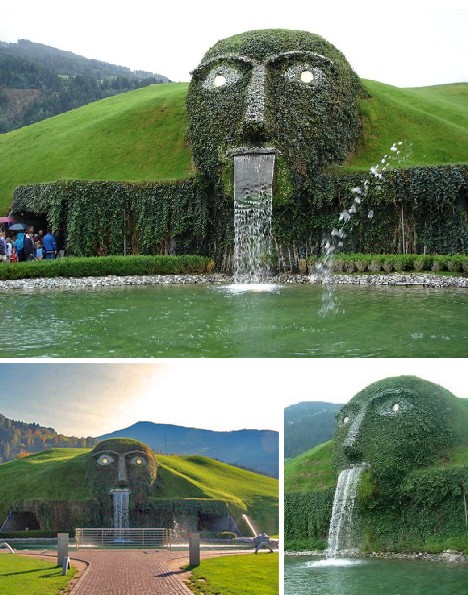 (images via: Travel Webshots and The Travelzine)
(images via: Travel Webshots and The Travelzine)
Looking like either a set from the 1960 film The Time Machine or Dr. Evil’s new lair from the upcoming Austin Powers flick, this huge, troll-like fountain is actually the entrance of the Swarovski headquarters in Wattens, Austria.
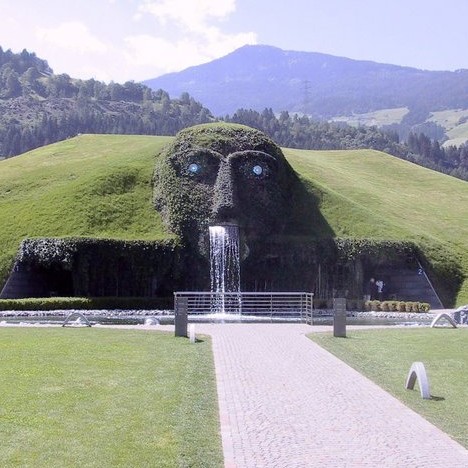 (image via: Wikimedia)
(image via: Wikimedia)
The Swarovski Kristallwelten, or Swarovski Crystal World, sits in the Austrian Tyrol like a jewel in a ring. If it looks like a fortress, that’s no accident: In 1892, firm owner Daniel Swarovski shifted the entire company out of Bohemia (today’s Czech Republic) to the wild & woolly Tyrol so that the tools and methods of the secretive company would remain firmly under wraps.
The Car Fountain, Italy
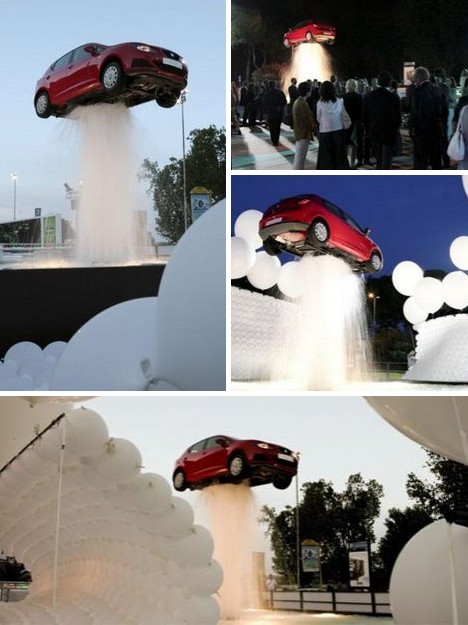 (images via: Oddity Central and Declubz)
(images via: Oddity Central and Declubz)
The Car Fountain – nothing fancy, just a Seat Ibiza hatchback (a Spanish car) looking like it ran over a fire hydrant. Installed in Rome where there are plenty of cars and fountains – just not in the same space – The Car Fountain was designed by Spanish artist Juan Galdeano and intended to raise awareness about global warming… by, er, raising a car.
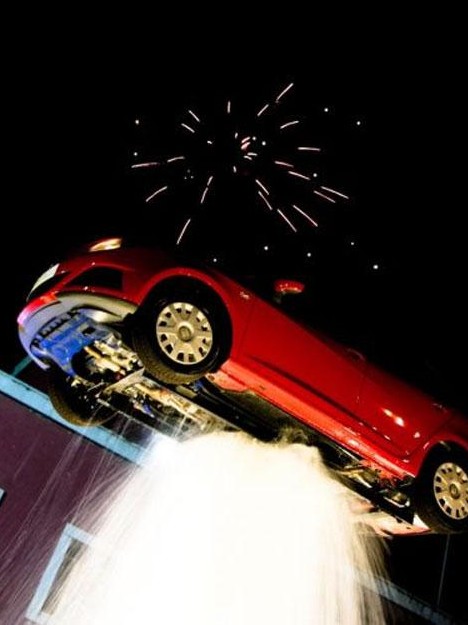 (image via: Oddity Central)
(image via: Oddity Central)
The the Spanish hatchback appears as though it’s riding atop a geyser of water, not to worry – there’s a hidden armature secreted within the column of foaming water that keeps the car positioned in place and immune from the vagaries of wind, water and the odd power outage.
Child Eater Fountain, Switzerland
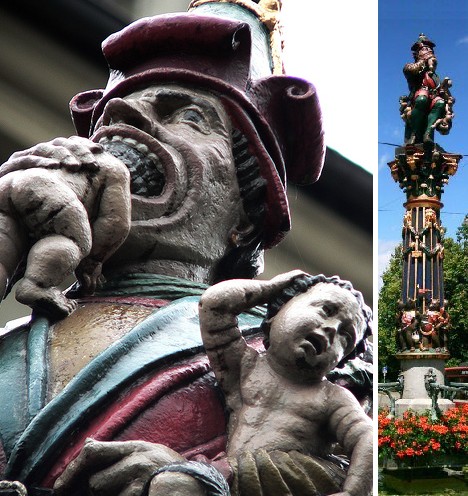 (images via: The Earl of Steinway and Travelpod)
(images via: The Earl of Steinway and Travelpod)
The Kindlifresserbrunnen (Child Eater Fountain, in German) or Ogre Fountain dates from 1544 and is one of many Gothic fountains dating from Bern’s golden age. The ogre that sits atop a tall tower is depicted biting hungrily into the head of a squirming baby while other fearful infants peek out from the bag slung over his shoulder. If anyone wonders why the Swiss are generally quiet, respectful, serious folks, it may be because their parents took them to see (and be traumatized by) the Ogre Fountain when they were young.
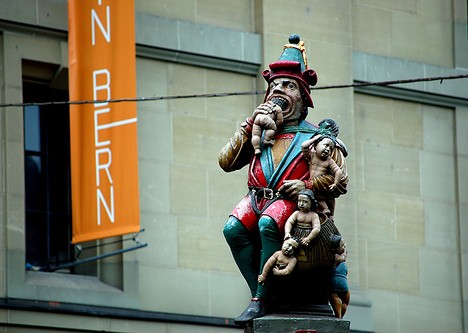 (image via: TripAdvisor)
(image via: TripAdvisor)
Some say the Ogre Fountain has a somewhat shady origin, referring to its pointed hat – a device sometimes used to portray Jews in the Middle Ages. In any case, today’s tourists and residents of Bern don’t delve into the dark side of the fountain’s history… what they can see is dark and disturbing enough as it is.
Nightmare Fountain, Germany
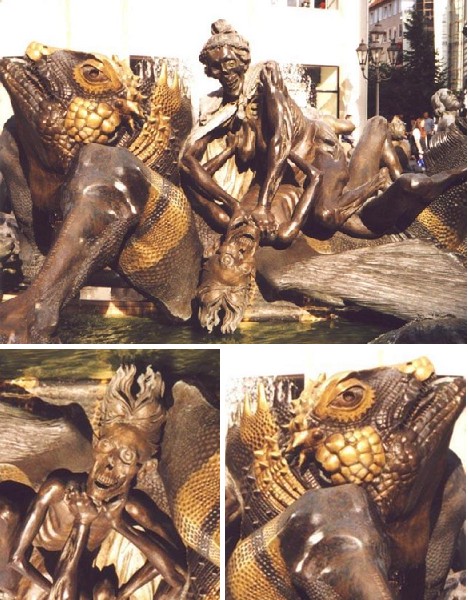 (image via: Travel Webshots)
(image via: Travel Webshots)
We’re calling this the Nightmare Fountain because, well, it fits. Located in Nurnberg, Germany, this surrealistic scene isn’t something most people would associate with serene, relaxing, cooling fountains. Instead we have what appears to be a murder scene frozen in burnished bronze while a giant iguana looks on. If you’re ever in Nurnberg and come across this fountain, throw a coin in… and wish it would go away.
Crown Fountain, USA
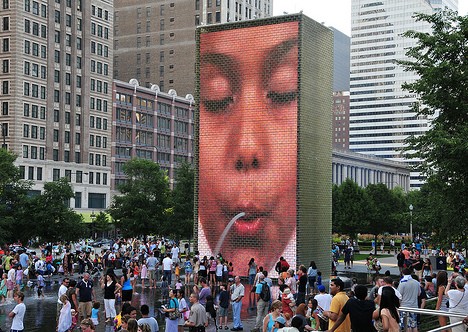 (image via: Everything Chicago)
(image via: Everything Chicago)
Fountains have historically combined the bizarre and the beautiful, though not always in equal measure. This post has focused on the bizarre but in closing we present the Crown Fountain in Chicago’s Millennium Park, a larger than life interactive public art exhibition that provides heaping helpings of strange and wonderful. Big it is – the pair of glass block faced, LCD screen backed towers anchor opposing ends of a shallow reflecting/wading pool.
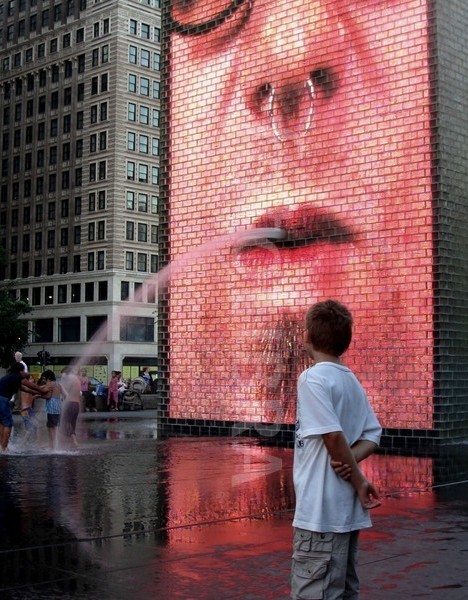 (images via: Ganzel Group, Therese Flanagan, Environment Debate and Manuel Medrano)
(images via: Ganzel Group, Therese Flanagan, Environment Debate and Manuel Medrano)
Spanish artist Jaume Plensa designed the Crown Fountain to be a tribute to the people of Chicago. The faces that appear to spit streams of water out from the towers are those of 1,000 Chicagoans rotated at random. Though water only flows from mid-spring to mid-fall each year in consideration of Chicago’s often blustery winter weather, the LCD screens are on full time.
The Crown Fountain epitomizes what fountains should be: places of mutual interest that suit and satisfy the public’s need for something curious yet familiar, and if these installations are sometimes weird, strange, even bizarre… well, sometimes so are we.
